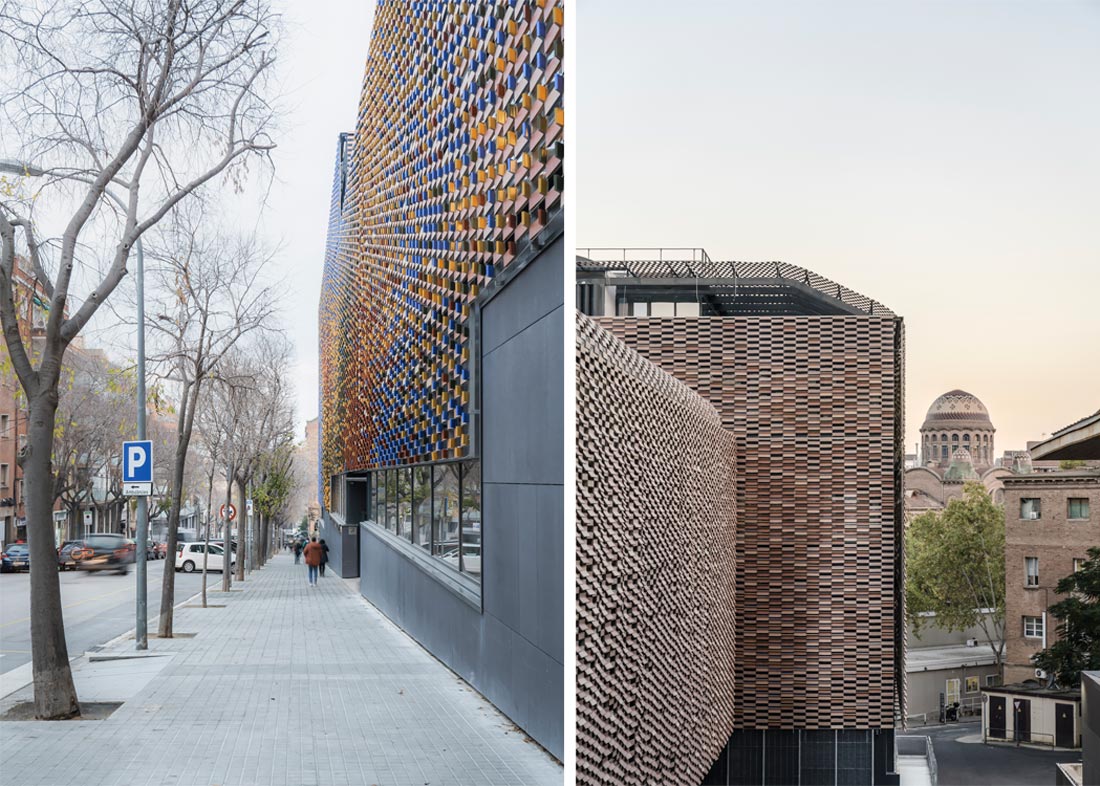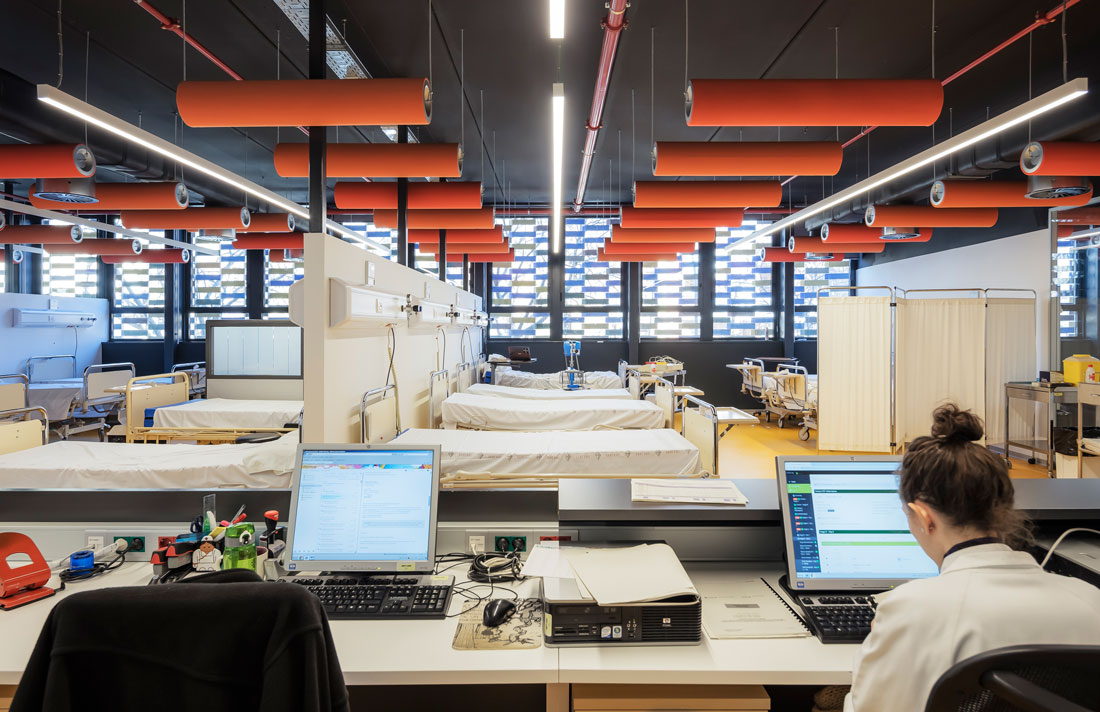The new Research Institute at Hospital de Sant Pau is a building conceived as a technological infrastructure in keeping with parameters of global sustainability. This ensures high comfort, optimal environmental behavior, the reduction of costs and consumption – in terms of both materials and energy – and an optimal functionality that takes into account the entire life cycle of the materials and of the building itself.
The building is organized into clear geometric volumes that act as mediators between the city’s road layout and the hospital complex, serving as one of the main access points.
The façade is simple and efficient, making use of sandwich panels with good insulation. These panels are protected by a technological ceramic skin as a latticework, with the same chromatic range as the historic pavilions of the Modernista hospital. This skin ensures a drastic reduction in energy demand (in a building with very significant internal thermal loads). In turn, it allows for the entry of natural light, while providing views to the outside and guaranteeing researchers’ privacy.
Each floor consists of a rectangle of 80 m x 11 m without pillars or vertical downspouts, providing great flexibility, surrounding a central 3 m core that houses all the fixed elements (stairs, shafts, elevators, facilities, bathrooms). These spaces are divided only by screens and partitions, which can be easily modified with great ease and can attach to the façade every 1.25 m without affecting it. These elements allow the building to be easily adapted even to substantial changes in use.
Flows relating the different uses have been carefully studied, in order to place them in the most advantageous situations. The most frequent routes are as short as possible. Incompatible routes are segregated, and broad, well-lit interrelation spaces are provided to house group meetings. These measures have allowed us to reduce the planned surface area by increasing flexibility and maintaining the requested functional program.
The construction systems are dry mounted (both the façade ceramics (Flexbrick) and the fiber cement partitions), avoiding supplementary railings and providing surfaces where the installations can be fixed (Euronit). The photocatalytic concrete base to the street helps filter the air of the city (Breinco), and the vegetal cover water tank collects rainwater for use in irrigation and toilets (Danosa).



























